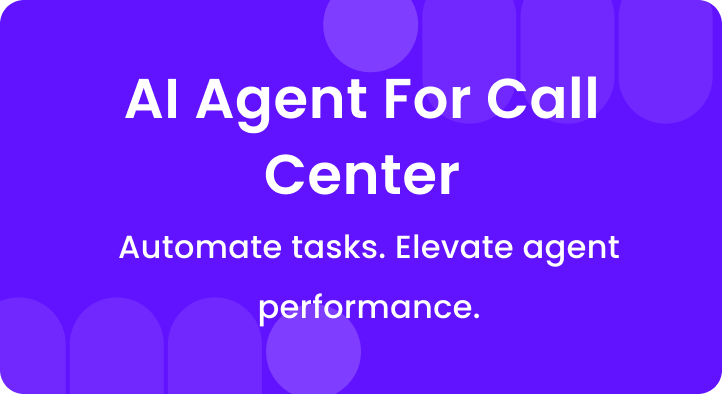Customer care is one of the crucial tools for maintaining a good relationship with existing and potential customers.
It can also be instrumental in breaking your relationship with customers. This should be common understanding – and yet, bad customer service is not uncommon.
Some common mistakes by the customer care representatives can trigger your customers, cause them to stop doing business with you, and even share negative feedback about the company with others.
Companies have lost billions because of erroneous interactions.
Today, we will discuss some bad customer service examples and how to fix it.
Table of Contents
A. What is bad customer service?
A straightforward way to define bad customer service would be when the company’s contact center fails to provide the proper support or information expected by its existing or potential customers.
But that’s not all. Other factors also contribute to the overall experience of the customer.
Customers have certain expectations from the company in terms of support quality, the responsiveness of the relationship manager, empathy, and behavior of the executive, etc.
It is not enough to just respond to queries or solve problems. Agents need to deliver these at the highest standards.
As a consequence of poor customer service, dissatisfied customers can switch to competitors.
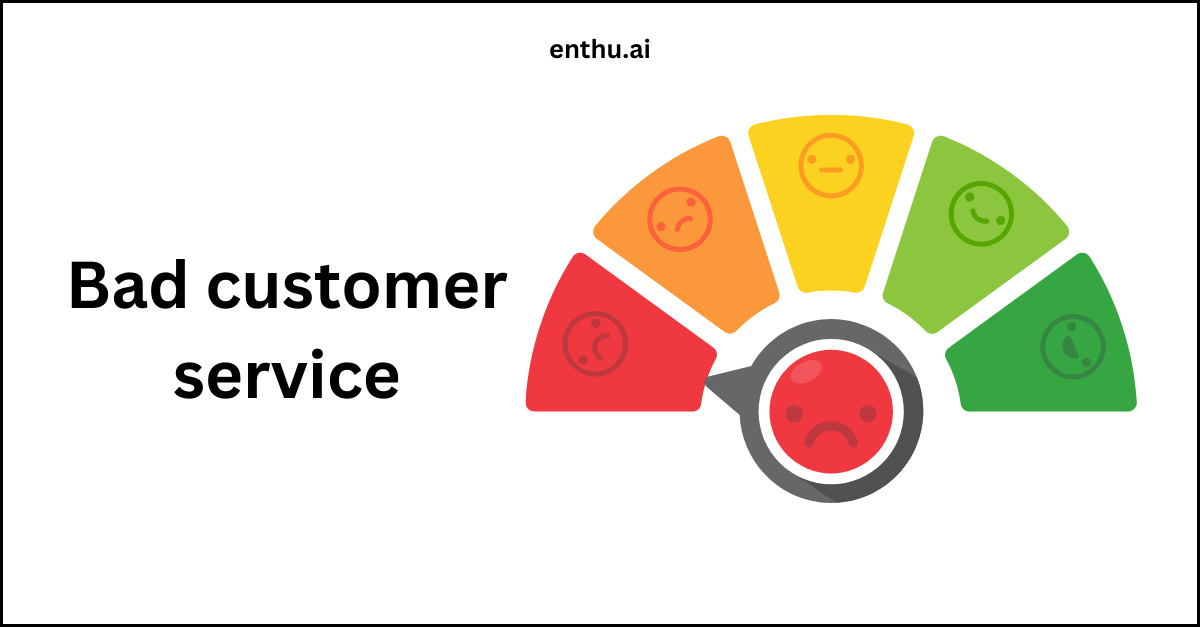
This can start as early as the first disappointing interaction.
Loyalty from customers doesn’t come easily – especially during and after the pandemic when people are online more often and often on edge.
B. What are the most common examples of poor customer service?
Let’s look at some of the most common mistakes that customer care agents often make.
1. Difficult to reach customer care agents
Customers hate it when they desperately try to reach out to you, but they end up talking to your chatbots.
Or they might have one-sided conversations via email.
Don’t expect chatbots on the app, website, or social media to solve all customer problems.
Instead, give your customers an easy option to talk to a human.

How to fix: It is essential to ensure that a team of empathetic agents with solutions is easy to reach. You must ensure that they are well-trained in handling customers. They should also be equipped with tools to provide customer support smoothly and record responses for better market insight.
2. Long wait time
Keeping your customers on hold for a ridiculously long time is a surefire way to lose them.
Customers expect quick responses, and a long wait time can try the patience of even upbeat customers, let alone those who are already frustrated and angry.
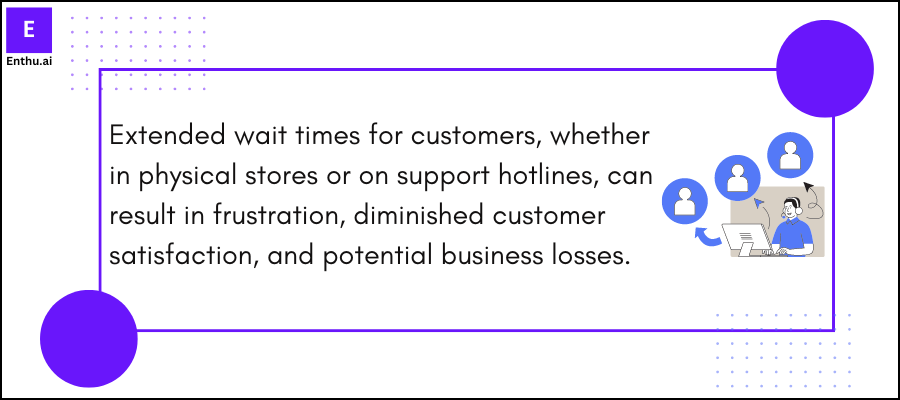
How to fix: Reduce queue time and respond faster using advanced tools. Focus on managing and improving the process. Use tools like automated workflow routing, sending tickets to the right agents, auto-responses with information about wait time, etc., and responding to priority customers faster. The key metric that one should optimize here is the Average Handle Time. Repeatedly asking for the same information, like personal details or the problem or query with which they have contacted, is an example of bad customer service and this reduces call center efficiency. This makes the customer impatient and makes them feel that their concerns and time are not valued. How to fix: Ensure that the agent is equipped with the right tool to record all information given by a customer reaching your contact center for the first time. It should also let agents access customer information quickly. Agents should be in front of the screen and scan all the customer data. One of the major turn-offs for customers is to get the call transferred from one agent to the other. This increases the time to solve the problem and shows that the agents don’t have a solution. Plus, the customer may be required to repeat their problems. How to fix: Agents receiving calls should be well trained with the basic answers. They must also know whom to transfer the call to in case of specialized solutions. A series of prompts in the first call (also called first call resolution) should help agents understand the exact issue and immediately direct the customer to the right agent. Making the customers realize that their problems are not being heard or understood can be a huge mistake. When customers are already agitated, they need to feel that the person on the other side of the call is making a genuine effort to feel their pain points to avoid customer churn. Example: How to fix: Agents must engage and be emotionally responsive. Metrics help measure your agent’s ability to convey these. Empathy statements can go a long way in showing that the agents care, but they must be implemented in their own language to avoid sounding fake. 💡 Pro Tip Use conversation intelligence tools to monitor and track your customer calls. Agents often have the tendency to use a negative stance, which can give customers one of their worst experiences. Customers expect agents to solve all their problems, and the no-can-do attitude of agents hampers their confidence in your company. How to fix: Remember that an agent may not have all answers – but they can make up for it by taking the initiative to find a solution. They must replace pessimistic words with optimistic promises and tone. Don’t forget to monitor and evaluate the customer care agents’ go-getter attitude. Rude behavior from contact center agents is not just abuse or a loud voice. It can include sarcasm, demeaning customers for their lack of understanding, etc. Customers may even consider it impolite if you don’t greet them, listen to them, or respond on time. How to fix: Even in the face of poor customer behavior, your contact center agents must not lose their cool. Handling difficult and ignorant customers calmly is their job role. But they must know that they don’t need to go out of their way to please customers, especially the abusive ones which increases customer retention rate. When customers initiate a conversation by email or chat and show no interest in calls, it is just wrong to try to engage them in conversation over the phone. Many companies also want customers to call if they want to modify their account or make a cancellation. How to fix: Agents must not forcibly call customers and stick to their chosen communication mode. Agents prefer phone calls as it is easier to convey empathy and enthusiasm to help through their tone. But they must respect their customers. They should also allow customers complete operations online. Customers frequently face confusion and irritation when they receive contradicting information or answers based on the communication channel used. This discrepancy might cause delays in issue resolution and erode trust in the company’s reliability and competency. How to fix: To address this issue, businesses should keep a single knowledge base available to all customer support representatives. This ensures that agents have access to the same information and can respond consistently across phone, email, chat, and social media channels. Additionally, cross-channel training programs should be created to educate agents on providing consistent information and solutions, hence improving the entire customer experience and trust in the firm. Customers often feel misled or distrustful when businesses fail to give clear information about policies, pricing, or terms and conditions. This lack of openness can result in misunderstandings, disagreements, and a negative view of the company’s integrity. How to fix: Businesses should make sure that policies, prices, and services are properly defined and easily available on their website and other customer-facing channels. Keeping honesty and integrity in all conversations, such as identifying constraints, delays, or errors and giving suitable solutions or compensation as needed, promotes openness and excellent customer connections. Example: Customer is charged unexpectedly post-trial due to unclear billing terms, leading to frustration. Customers feel disappointed and devalued when companies overlook their feedback or issues. This lack of attention can make customers feel unheard and unsatisfied, potentially leading to lower loyalty and negative word-of-mouth. How to fix: To solve this challenge, businesses should create comprehensive systems for collecting, analyzing, and acting on consumer feedback across all communication channels. It is important to reply quickly to customer feedback, acknowledge their concerns, and provide solutions on how issues are being rectified. This proactive approach indicates a focus on the needs of customers, enhances satisfaction and loyalty. Many companies now invest a small fortune to set up a contact center with empathetic and professional agents to provide prompt help. For that, it’s not enough to have a customer care department. You also need to train & coach your agents to identify and avoid bad customer service and provide them with tools to make the activities smoother. 1. What are the 7 qualities of bad customer service? The seven qualities of bad customer service are unresponsiveness, rudeness, a lack of knowledge, inefficiency, poor communication, a lack of empathy, and inconsistency. These attributes cause customer frustration and have a negative effect on the company’s reputation. 2. What is an example of a bad service review? The service was poor! The staff was rude and unhelpful I waited forever, and my problem was never fixed. I will not be returning and would not suggest this place to anyone. Very disappointing experience! 3. What to do when bad customer service? When faced with bad customer service, you can escalate the issue to a supervisor, provide feedback, seek alternative channels for assistance, or switch to a competitor with better service. 4. What is bad customer service? Bad customer service refers to a negative experience for customers caused by unresponsiveness, a lack of empathy, poor communication, or the failure to resolve issues effectively. This leads to frustration, dissatisfaction, and potential loss of trust or loyalty. 5. How can a business improve after bad customer service? Start by listening to your customers. Gather feedback to understand where things went wrong. Retrain your team on empathy, communication, and problem-solving. Use call recordings or AI QA tools to identify recurring issues. Finally, follow up with affected customers, showing accountability can rebuild trust fast. 6. Why is customer service often so bad? Poor training, high agent turnover, and lack of monitoring are the main reasons. Many businesses also fail to give agents the tools or authority to solve problems quickly. Without coaching and QA, service quality declines fast, especially in high-volume contact centers.3. Requesting customers to repeat their query

4. Repeated call transfers
5. Lack of empathy
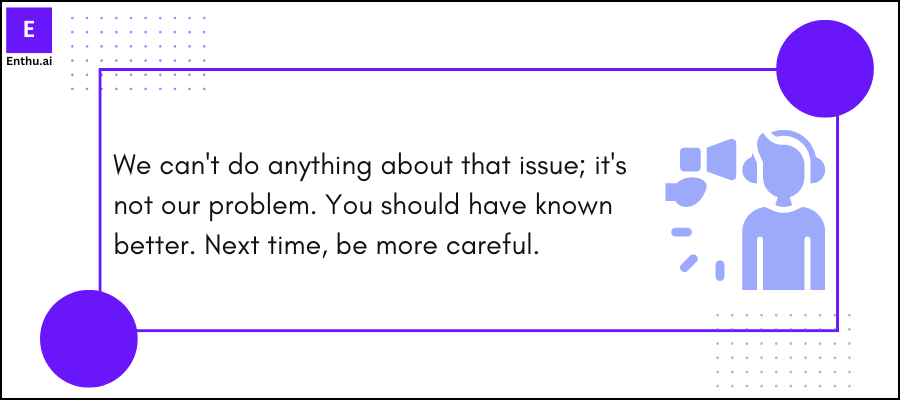
6. Using negative language
7. Rude Behavior
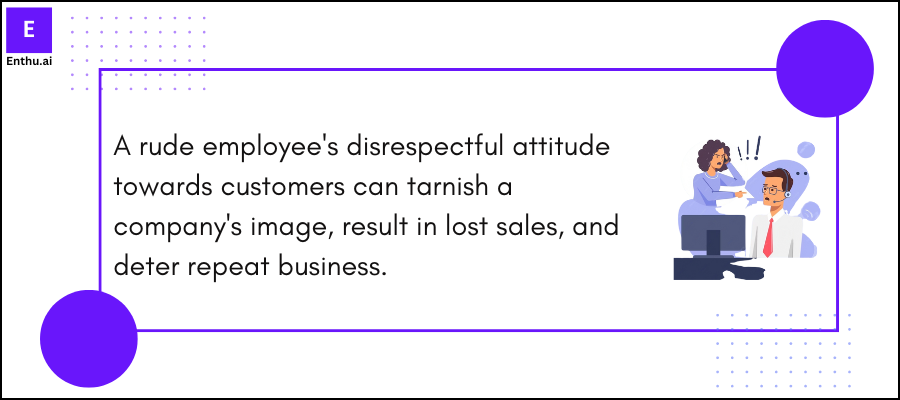
8. Forced phone calls
9. Inconsistent information across channels
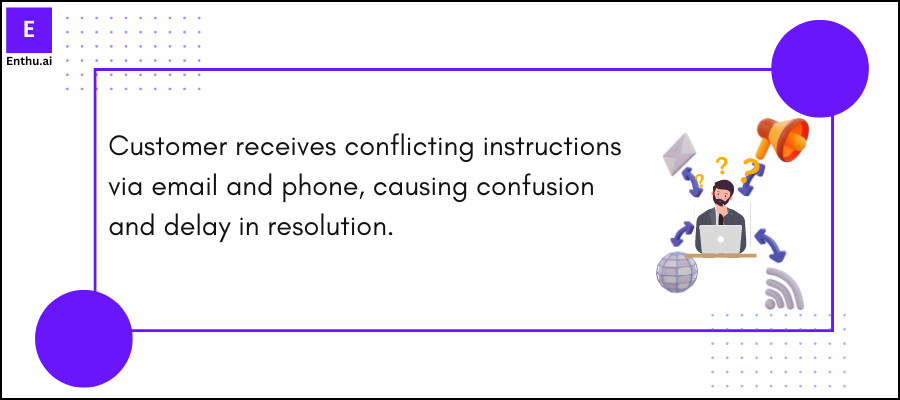
10. Lack of transparency
11. Customer feedback
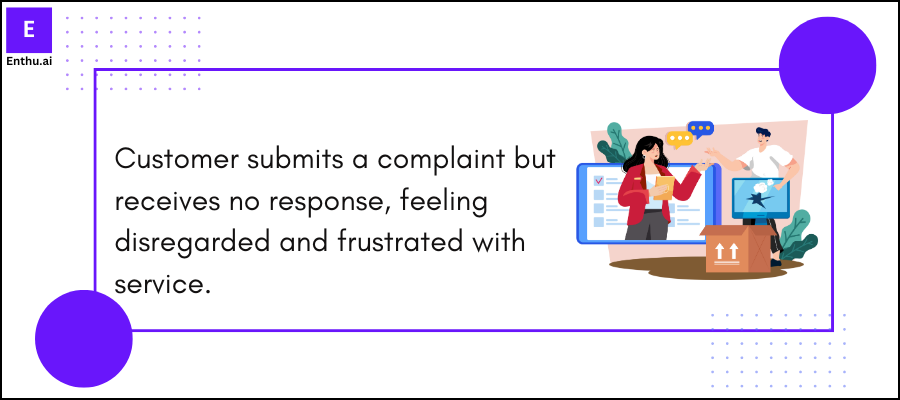
Conclusion
FAQs
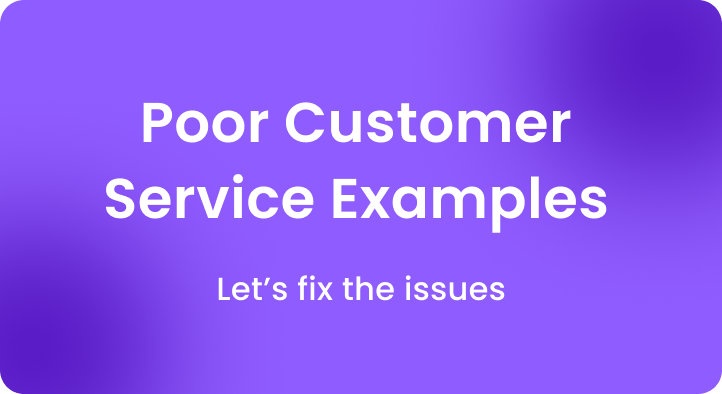



 On this page
On this page


